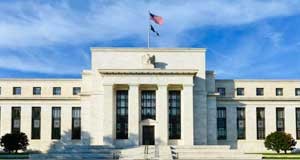 This week’s watching and waiting game looks set to come to a conclusion later today when the US Federal Reserve monetary policy committee winds up its latest two day meeting with a decision on whether to raise interest rates for the second time in 9 months.
This week’s watching and waiting game looks set to come to a conclusion later today when the US Federal Reserve monetary policy committee winds up its latest two day meeting with a decision on whether to raise interest rates for the second time in 9 months.
If the narrative of the last few weeks has been any sort of guide it is clear that the FOMC is split down the middle as to whether rates should be raised, and it is highly likely that whatever decision is arrived at there will probably be some dissent.
The most recent comments from Fed chair Janet Yellen at Jackson Hole in August certainly suggested that she was leaning in the direction of raising rates this month, by stating that the case for an increase had strengthened in recent months, however that was before recent data showing a sharp slowdown in retail sales, ISM and housing data.
Vice chair Stanley Fischer, who at the beginning of this year suggested 4 rate rises could be on the cards, also backed up Yellen’s comments about recent data at the time, suggesting that the committee were coalescing towards a move this month.
That was however before this month’s disappointing data which suggested that the pickup in GDP growth in Q2 hadn’t transpired as expected and that Q3 wasn’t showing signs of improving either.
It is clear that Fed officials had been hoping that the economic data would improve to an extent that any move on rates would likely be seen as a slam dunk in the way that last December’s rate rise was.
Sadly for Fed officials the data hasn’t been playing ball in so much that while bond yields have edged higher in the months since June, Fed Funds positioning suggest only a 20% chance of a move today, due to the recent deterioration in US economic data.
In other words markets are expecting a hike sometime in the next few months, just not today, which suggests that any move by the FOMC today would catch the markets completely unprepared.
This would have the potential to be a rather risky option for the Fed, despite significant enthusiasm from several members of the committee to go now, which means if the Fed were to move today, Janet Yellen’s press conference would then be an exercise in expectations management, though this would be equally true if they hold rate, as is widely expected, though it would be an easier task to manage.
Raising rates against expectations would immediately invite speculation about a move in December which the Fed chief would find exceedingly difficult to rule out, though if Donald Trump got elected as President any Fed decision to hold rates would likely become that much easier.
For all the debate about whether the US economy is in a position to absorb a rate rise, the inescapable fact remains that despite an improving labour market US GDP has been slowing steadily since the end of the first quarter of 2015, something that permanent member Lael Brainard does appear to be aware of, if recent dovish comments are anything to go by, which begs the question as to whether her arguments win out, or whether the hawks get their way.
Given Yellen’s propensity for caution a hold on rates does seem the most likely outcome, but we shall see.
In the meantime earlier today the Bank of Japan announced its latest monetary policy decision and given how divided policymakers were with respect to their January decision to cut rates into negative territory, a decision which was only narrowly carried by 5 votes to 4, it wouldn’t have been too much of surprise if the central bank were to disappoint this morning.
As it was despite an expectation that rates might get cut further, they were left unchanged at -0.1%, however the bank did agree some tweaks to the policy framework. It abandoned its policy target of expanding the monetary base by 80trn yen a year, as well as opting to finesse the yield curve to better suit its goals of getting inflation above 2%.
There was no consensus view leading up to today’s meeting as to what to expect from Bank of Japan officials, simply because most in the markets acknowledge that after nearly 20 years of trying, the central bank is pretty much out of ammunition to the extent it is now pushing on a string.
Today’s UK public finance numbers for August almost seem like a sideshow, though with the pound at two month lows against the US dollar, and looking a little soggy a sharp return to deficit could well tip it back towards the 1.2800 level. After posting a surplus in July of £1.5bn it is expected to see a sharp return to deficit of £10.5bn in August.
EURUSD – still supported by support at the 200 day MA, as well as the key support area near the 1.1120 area for now. A move back through the 1.1220 area retargets the 1.1300 area while a move below 1.1120 retargets the low 1.1000’s.
GBPUSD – the pound has continued to drift lower, towards trend line support from the July lows, which currently comes in at 1.2930. A break higher has the potential to target the 1.2800 level. We need a rebound through the 1.3120 level to stabilise.
EURGBP – the resistance at the 0.8620/30 area has contained the current rebound for now, which keeps the prospect of a move back to the 0.8480 area on the table. Above 0.8640 retargets the 0.8720 area.
USDJPY – continues to drift lower with resistance now at the 102.30, followed by 103.50. While below here the prospect of a move towards the recent lows around the 99.50 area remains. On the flip side a move through 104.00 could well see 107 quite quickly.












